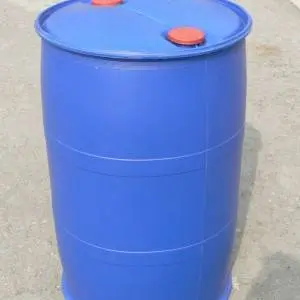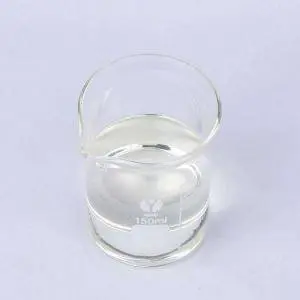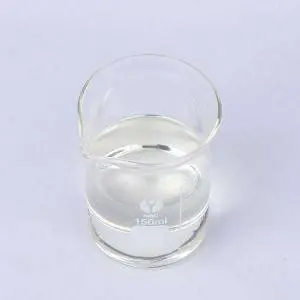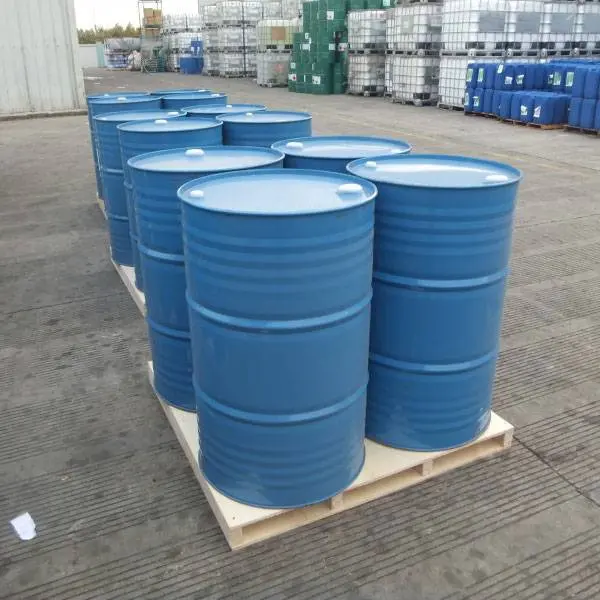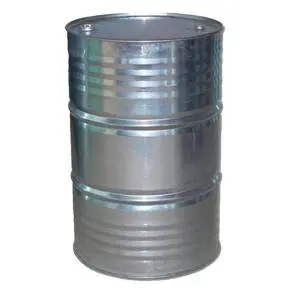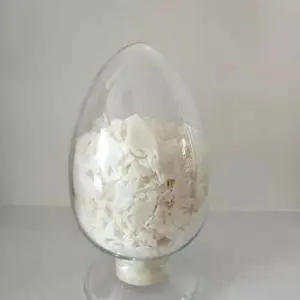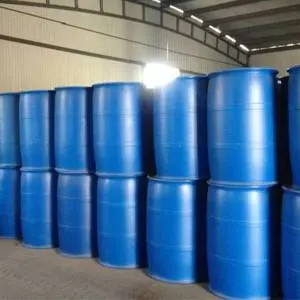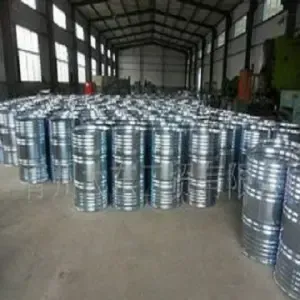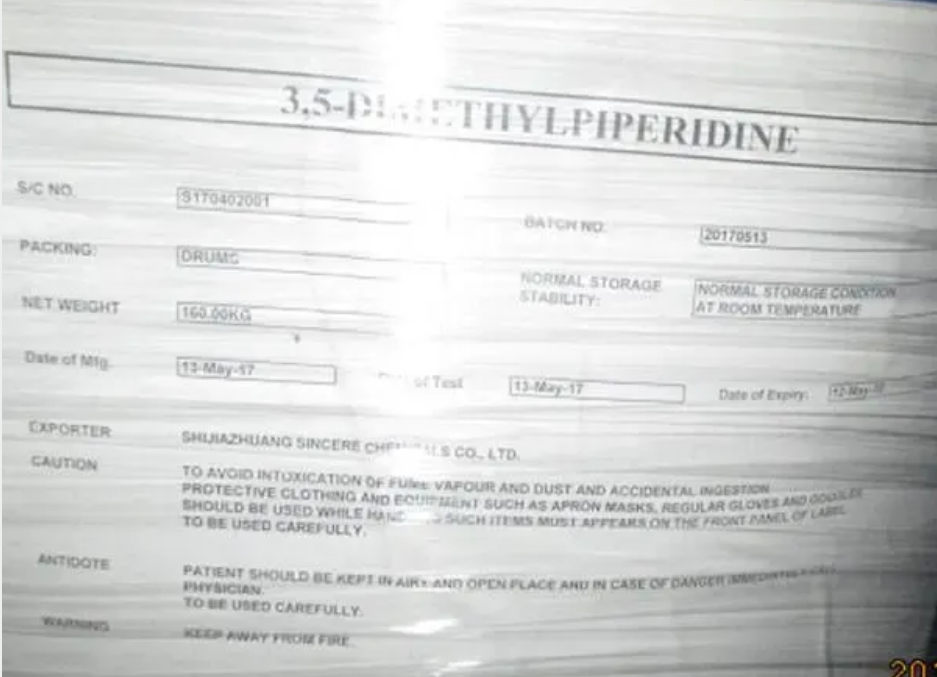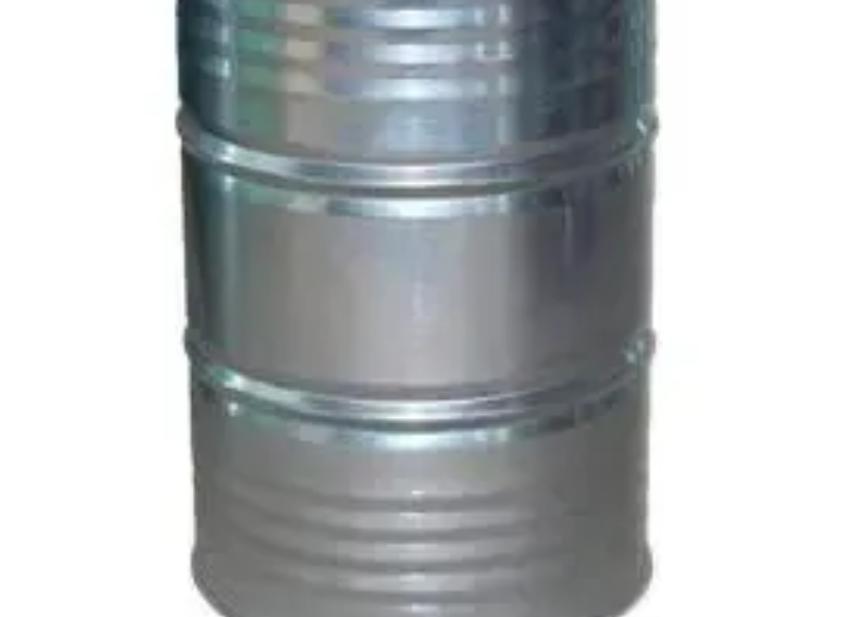High-Purity Benzyl Formamide for Organic Synthesis
Introduction to Benzyl Formamide and Market Dynamics
Benzyl Formamide (C8H9NO) is a crucial organic intermediate renowned for its versatile applications in the fine chemical industry. As a key building block, it plays a pivotal role in the synthesis of pharmaceuticals, agrochemicals, and various specialty chemicals. The global market for high-purity chemical intermediates like Benzyl Formamide is experiencing robust growth, primarily driven by the escalating demand from the pharmaceutical sector for novel drug development and the agrochemical industry's continuous innovation in crop protection agents. Industry trends indicate a strong emphasis on sustainability, purity, and batch consistency, pushing manufacturers to adopt more efficient and environmentally friendly synthesis routes. The utility of this compound stems from its unique chemical structure, which allows for diverse reaction pathways, making it indispensable in complex organic syntheses. Its ability to act as a formylating agent or a nitrogen source in specific reactions contributes significantly to its broad applicability. The increasing regulatory scrutiny on chemical quality and safety also underscores the importance of sourcing Benzyl Formamide from reputable suppliers who adhere to stringent quality control standards and possess comprehensive material characterization capabilities. The market's upward trajectory is also supported by advancements in synthetic methodologies, which enhance yield and purity, thereby improving the overall economic viability of its usage in large-scale industrial processes. This compound's reliability and consistent performance are critical for end-product integrity and performance across numerous high-value applications.
The demand for Benzyl Formamide is not only quantitative but also qualitative, with end-users increasingly requiring specific purity profiles and trace impurity limits, especially for pharmaceutical excipients and active pharmaceutical ingredients (APIs). This necessitates advanced analytical techniques such as High-Performance Liquid Chromatography (HPLC), Gas Chromatography-Mass Spectrometry (GC-MS), and Nuclear Magnetic Resonance (NMR) spectroscopy to ensure compliance with pharmacopoeial standards and application-specific requirements. Furthermore, supply chain resilience has emerged as a critical factor, with global events highlighting the need for stable and reliable sourcing partners. Manufacturers who can guarantee consistent supply, transparent documentation, and robust quality assurance programs are highly valued in this competitive landscape. The versatility of Benzyl Formamide extends beyond its traditional roles, as ongoing research explores its potential in new areas, including polymer chemistry and advanced material science, hinting at future market expansion. Its stability under typical storage conditions and ease of handling also contribute to its industrial appeal, minimizing risks and operational complexities for downstream users. The current market outlook remains positive, with continued investment in research and development within the fine chemical sector, promising further innovations and expanding utility for Benzyl Formamide in various high-tech applications globally.
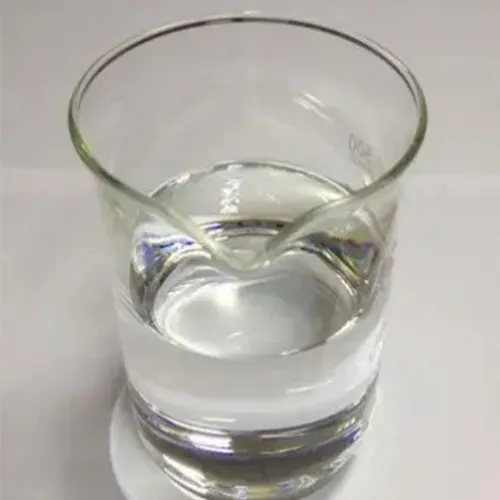
Understanding the Benzyl Formamide Manufacturing Process
The synthesis of Benzyl Formamide typically involves the reaction of benzylamine with a formylating agent, often formic acid or its derivatives, under carefully controlled conditions to ensure optimal yield and purity. The manufacturing process commences with the precise preparation of raw materials, ensuring their quality and concentration meet strict specifications. Benzylamine (C7H9N) and formic acid (CH2O2) are common precursors, both undergoing rigorous incoming quality inspection using techniques such as gas chromatography (GC) to verify purity and absence of critical contaminants. The core of the process involves a condensation reaction, often carried out in a stainless steel or glass-lined reactor, depending on the scale and specific reaction conditions. Temperature, pressure, and reaction time are meticulously monitored and adjusted to facilitate efficient conversion and minimize side reactions. Catalysts, if employed, are selected to enhance reaction kinetics and selectivity, ensuring a high-quality product. Post-reaction, the crude product undergoes a series of purification steps. These often include neutralization to adjust pH, liquid-liquid extraction to separate desired product from aqueous phases and impurities, and subsequent distillation under reduced pressure. Distillation is critical for achieving high purity, separating the desired Benzyl Formamide based on its boiling point from unreacted raw materials or high-boiling byproducts.
Following distillation, the purified Benzyl Formamide may undergo further refinement steps such as crystallization, especially if a solid form is desired or an even higher purity level is required. This involves dissolving the compound in a suitable solvent, controlled cooling, and then filtration, followed by thorough drying using vacuum ovens or other appropriate drying technologies. Throughout the entire manufacturing process, stringent quality control checks are implemented at various stages. In-process controls (IPCs) verify reaction progress and purity intermediates. Final product inspection includes comprehensive analytical testing, adhering to international standards such as ISO 9001:2015 for quality management systems and specific chemical industry norms. Key parameters tested include purity by HPLC/GC, moisture content by Karl Fischer titration, melting point, appearance, and spectroscopic analysis (NMR, IR) to confirm the molecular structure. This multi-stage process, from raw material inspection to final product packaging, ensures that each batch of Benzyl Formamide meets the exact specifications required by demanding B2B applications, offering consistent quality, predictable performance, and extended shelf life, thereby mitigating risks for end-users in sectors like petrochemical and pharmaceutical manufacturing.
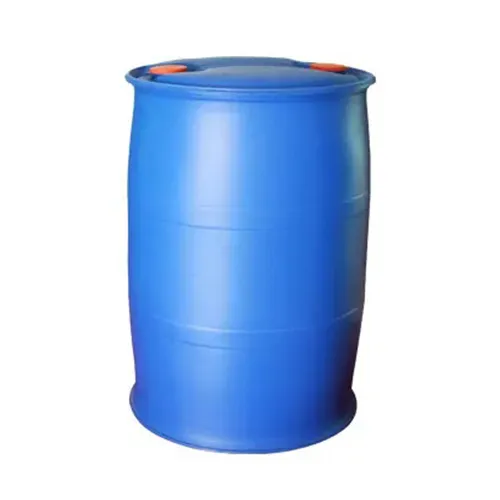
Technical Specifications and Performance of Benzyl Formamide
The technical specifications of Benzyl Formamide are critical determinants of its suitability for specific industrial applications, ensuring consistent performance and regulatory compliance. Typically, high-grade Benzyl Formamide exhibits an appearance ranging from a colorless to pale yellow clear liquid or a white crystalline solid, depending on its purity and ambient temperature (its melting point is around 29-32 °C). Its chemical identity is confirmed by its molecular formula C8H9NO and a molecular weight of 135.16 g/mol. Purity levels are paramount, with commercial grades typically exceeding 99% (GC or HPLC area normalization), while pharmaceutical and high-tech applications often demand purities of 99.5% or even 99.9%. Moisture content is usually kept below 0.1% to prevent hydrolysis and maintain stability. The boiling point of Benzyl Formamide is approximately 280-282 °C (at 760 mmHg), and its density is around 1.06 g/mL at 25 °C, making it a moderately dense liquid. Its refractive index (nD20) is typically around 1.5430-1.5450. These physical parameters are essential for process engineers and chemists to design efficient synthesis routes and handling procedures. Beyond these basic properties, its performance is characterized by its high reactivity as a formylating agent, enabling selective formylation reactions crucial in synthesizing various APIs and agrochemicals.
| Parameter | Specification | Test Method / Standard |
|---|---|---|
| Chemical Formula | C8H9NO | Structural Analysis |
| Molecular Weight | 135.16 g/mol | Theoretical |
| Appearance | Colorless to pale yellow liquid or white solid (depending on temperature) | Visual Inspection |
| Purity (GC/HPLC) | ≥ 99.0% (typically 99.5% for high grade) | GC-FID / HPLC-UV |
| Moisture Content | ≤ 0.1% | Karl Fischer Titration |
| Boiling Point | 280-282 °C (760 mmHg) | Literature Value / Experimental |
| Melting Point | 29-32 °C | Differential Scanning Calorimetry (DSC) |
| Density (25°C) | ~1.06 g/mL | Pycnometer / Densimeter |
| Storage Conditions | Store in cool, dry, well-ventilated area; keep container111 tightly closed. Protect from light and moisture. | Safety Data Sheet (SDS) |
The performance attributes of Benzyl Formamide extend to its thermal stability and compatibility with various solvents. Its low volatility at room temperature ensures safety in handling and storage, while its moderate solubility in polar organic solvents makes it suitable for diverse reaction environments. This robust chemical profile, backed by rigorous analytical verification, makes it a preferred choice for manufacturers seeking reliable and efficient chemical intermediates. Furthermore, its consistent batch-to-batch quality, ensured through adherence to ISO standards and internal quality protocols, is paramount for clients in sectors where deviation in material properties can lead to significant production issues or non-compliance with regulatory bodies such as the FDA.
Applications and Advantages of Benzyl Formamide in Industry
Benzyl Formamide serves as a highly versatile intermediate with extensive applications across various industrial sectors, particularly where precise chemical synthesis is paramount. In the pharmaceutical industry, it is a critical precursor for synthesizing a wide range of active pharmaceutical ingredients (APIs), including anti-inflammatory drugs, antipsychotics, and antidepressants. Its unique structure facilitates the introduction of formyl groups or nitrogen-containing functionalities, which are essential for creating the complex molecular architectures required for drug efficacy. For instance, its derivatives are integral in the synthesis of certain benzodiazepine analogues and other heterocyclic compounds that form the backbone of many therapeutic agents. In the agrochemical sector, Benzyl Formamide is employed in the production of herbicides, fungicides, and insecticides. Its derivatives contribute to the development of new generation crop protection agents that are more effective and environmentally benign, helping to improve agricultural productivity and sustainability. The compound's stability and controlled reactivity are significant advantages, enabling chemists to perform reactions with high selectivity, thereby minimizing undesirable byproducts and enhancing overall synthesis efficiency. This contributes to reduced purification costs and higher yields of the desired end-product, making manufacturing processes more economical.
Beyond pharmaceuticals and agrochemicals, Benzyl Formamide finds utility in the synthesis of specialized dyes, pigments, and certain polymer additives, where its chemical properties impart desired characteristics like improved color fastness or material strength. Its role as a niche solvent in specific organic reactions, particularly those requiring a polar aprotic environment with good solubilizing power for a range of substrates, also highlights its versatility. The key technical advantages of utilizing Benzyl Formamide include its high purity profile, which is crucial for applications demanding stringent quality, such as those in the life sciences. Furthermore, its consistent batch quality, ensured by meticulous manufacturing processes and analytical validation, provides reliability to customers, preventing costly production delays and reprocessing. For example, in the synthesis of a critical pharmaceutical intermediate, a consistently high-purity batch of Benzyl Formamide can significantly reduce subsequent purification steps, leading to energy savings and reduced waste generation. This contributes to a more sustainable and cost-effective production chain. The compound's predictable reactivity profile further allows for optimized reaction conditions, leading to higher conversion rates and minimized consumption of raw materials, epitomizing efficiency in complex chemical processes.
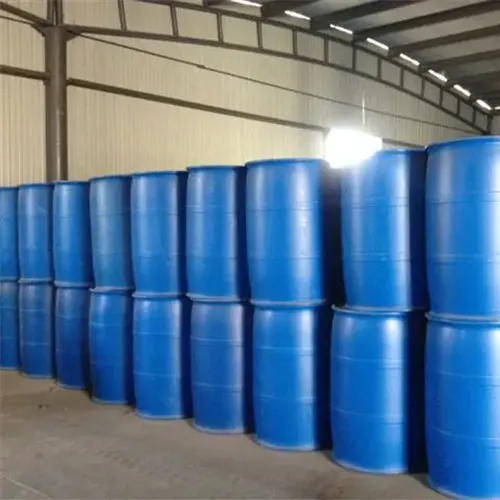
Selecting a Reliable Benzyl Formamide Supplier: Trust and Quality Assurance
When selecting a supplier for chemical intermediates like Benzyl Formamide, B2B decision-makers prioritize several critical factors, including product quality, supply chain reliability, technical support, and comprehensive quality assurance protocols. A reputable supplier should demonstrate strong expertise in organic synthesis and possess advanced analytical capabilities to guarantee product specifications. Certifications such as ISO 9001:2015 for quality management systems and adherence to global regulatory frameworks like REACH (Registration, Evaluation, Authorisation and Restriction of Chemicals) for the European market are non-negotiable indicators of a vendor's commitment to quality and safety. Furthermore, extensive experience in the field, often reflected in years of service and a robust portfolio of client success stories, instills confidence. A trusted partner will provide transparent documentation, including Certificates of Analysis (CoA) for every batch, Material Safety Data Sheets (MSDS/SDS), and technical data sheets, ensuring full traceability and compliance. Consider suppliers who offer flexible delivery schedules and possess robust logistics networks to minimize lead times and ensure on-time delivery, which is vital for maintaining continuous production cycles without disruption. Customization capabilities for specific purity requirements or packaging needs also distinguish leading suppliers, offering tailored solutions that align with unique project demands.
Frequently Asked Questions (FAQs)
- What are the recommended storage conditions for Benzyl Formamide?
For optimal stability, Benzyl Formamide should be stored in a cool, dry, and well-ventilated area, preferably between 2°C and 8°C. Containers should be tightly sealed and protected from direct sunlight, heat, and moisture to prevent degradation and maintain purity. - Is Benzyl Formamide safe to handle?
While generally safe when handled correctly, Benzyl Formamide is a chemical and requires appropriate precautions. Always use personal protective equipment (PPE) such as gloves, safety goggles, and lab coats. Ensure adequate ventilation in the workspace. Refer to the Material Safety Data Sheet (MSDS) for comprehensive safety guidelines, including first aid measures and emergency procedures. - Can you provide customized purity levels or packaging for Benzyl Formamide?
Yes, leading manufacturers often offer custom synthesis and purification services to meet specific purity requirements for niche applications. They can also provide customized packaging options, including various container111 sizes and materials, to suit client logistics and storage preferences. Inquiry with the sales or technical team is recommended for bespoke solutions. - What is the typical lead time for Benzyl Formamide orders?
Delivery lead times vary based on order quantity, current stock levels, and shipping destination. Reputable suppliers provide clear lead time estimates upon quotation and aim for prompt dispatch. For large or custom orders, planning in advance is advisable, with typical lead times ranging from 2-4 weeks.
Quality Assurance & Customer Support
A commitment to total quality assurance is the hallmark of a reliable Benzyl Formamide supplier. This includes not only stringent in-process and final product quality controls but also a robust quality management system that ensures consistent batch quality and full traceability. Suppliers should offer comprehensive technical support, with readily available experts to assist with application queries, safety information, and troubleshoot any challenges. Furthermore, a clear warranty policy and responsive customer service team are indicative of a partner who stands behind their product and values long-term relationships. Prompt communication, transparent pricing, and a willingness to provide detailed technical documentation are all crucial elements that contribute to trust and build a dependable supply chain for critical chemical intermediates.
References
- Clayden, J., Greeves, N., & Warren, S. (2012). Organic Chemistry. Oxford University Press.
- Smith, M. B., & March, J. (2007). March's Advanced Organic Chemistry: Reactions, Mechanisms, and Structure. John Wiley & Sons.
- International Organization for Standardization. (2015). ISO 9001: Quality management systems – Requirements.
- European Chemicals Agency (ECHA). (2023). REACH Regulation (EC) No 1907/2006.
Post time: Aug . 18, 2025 05:40



